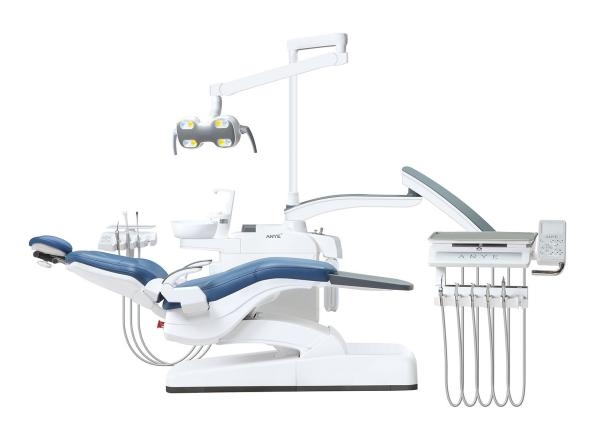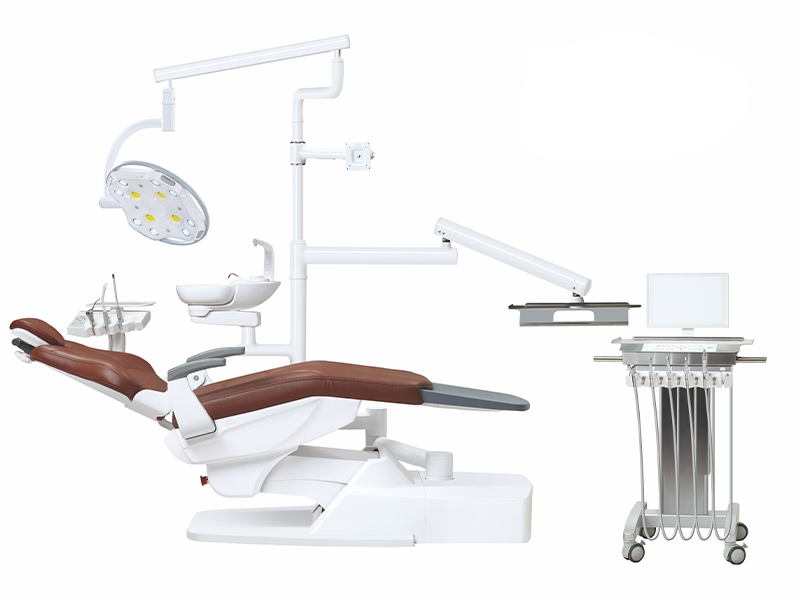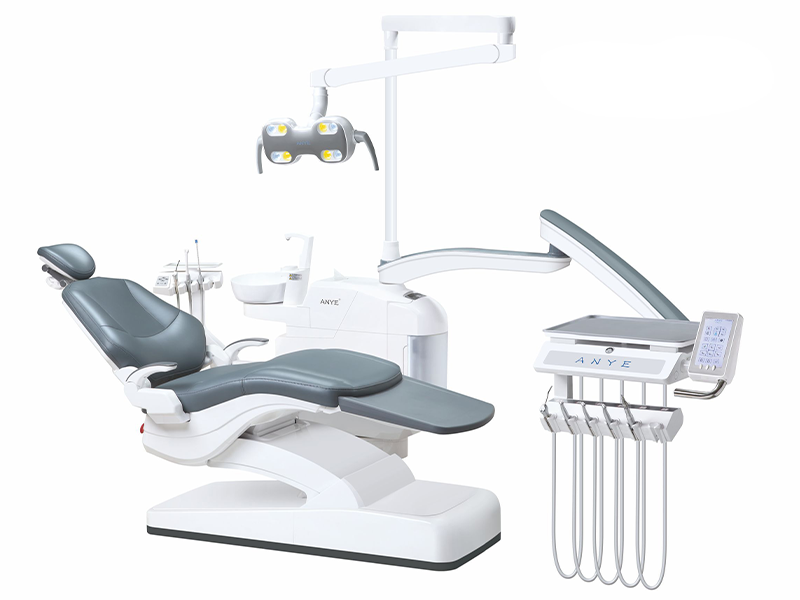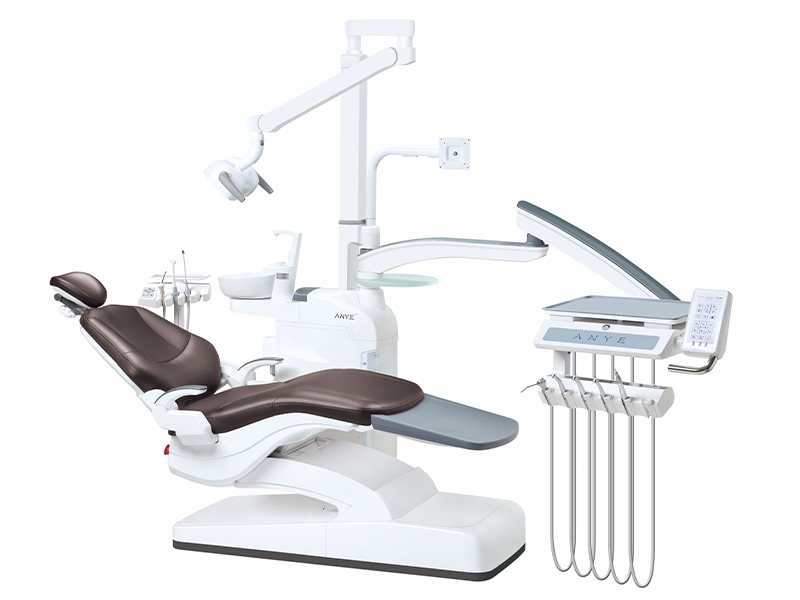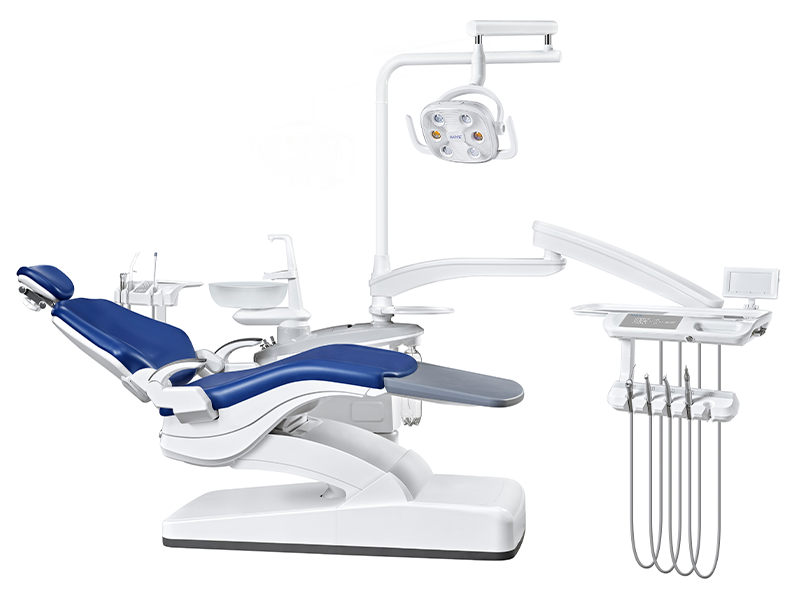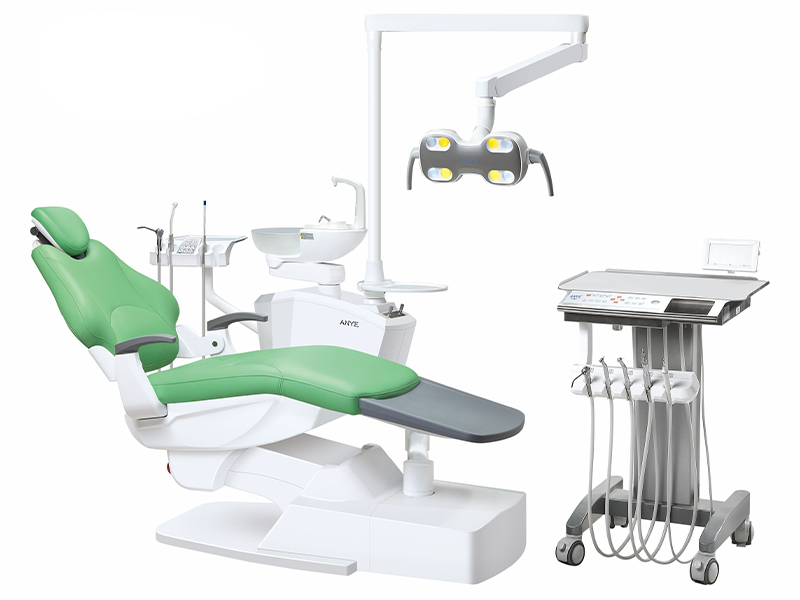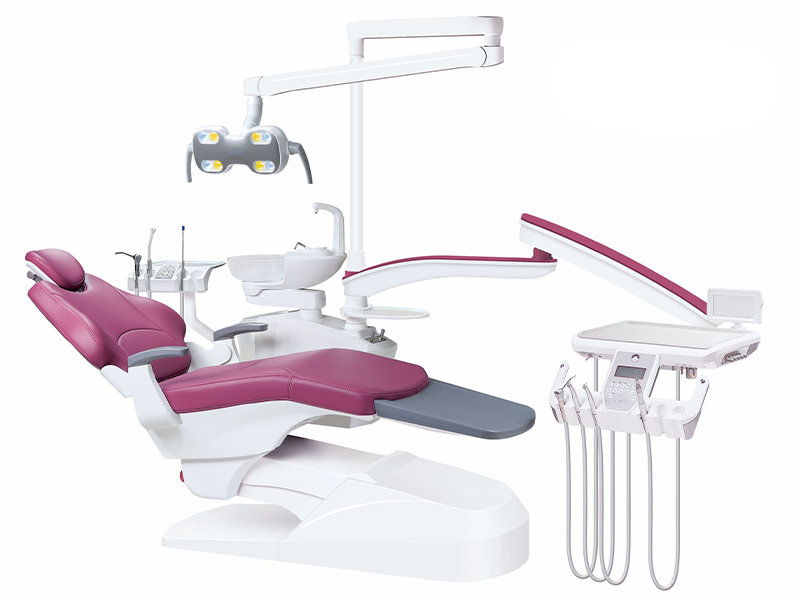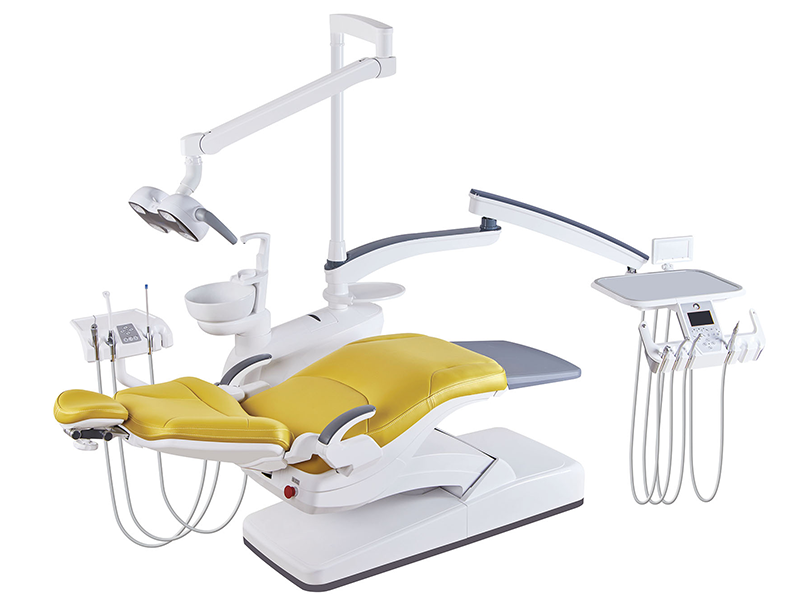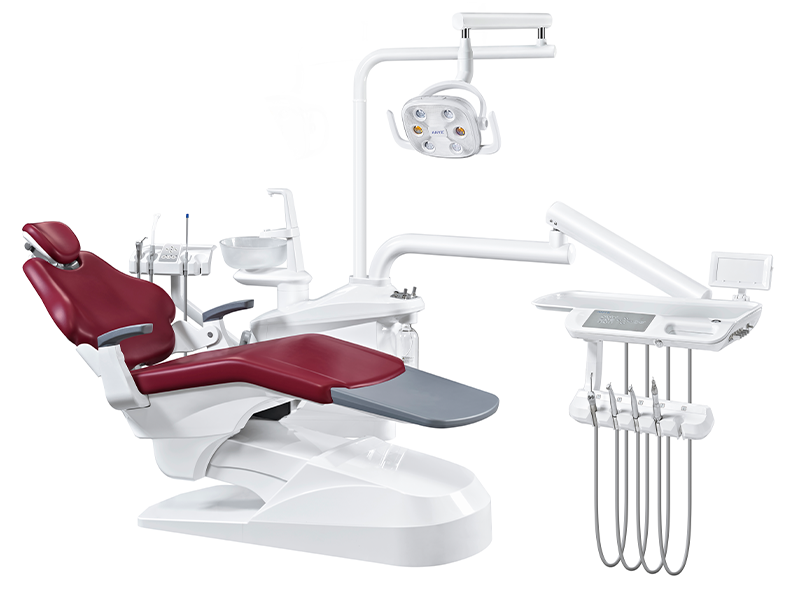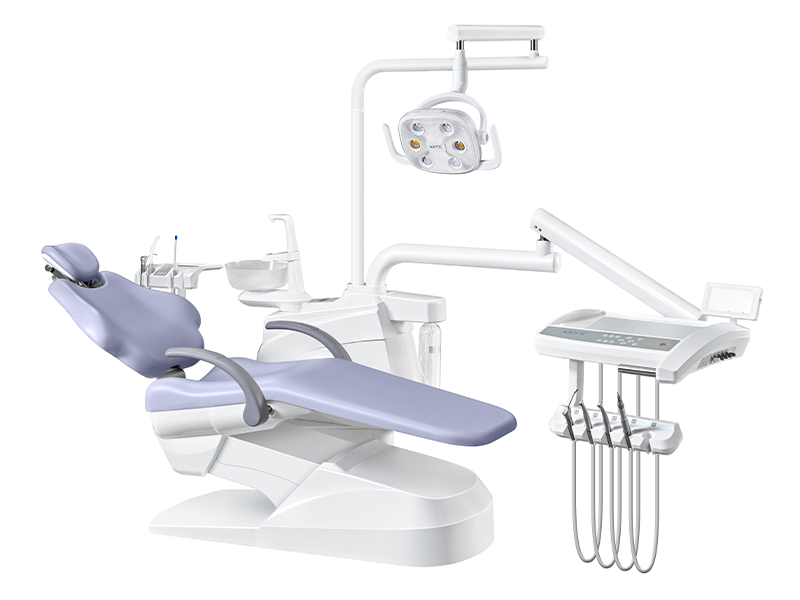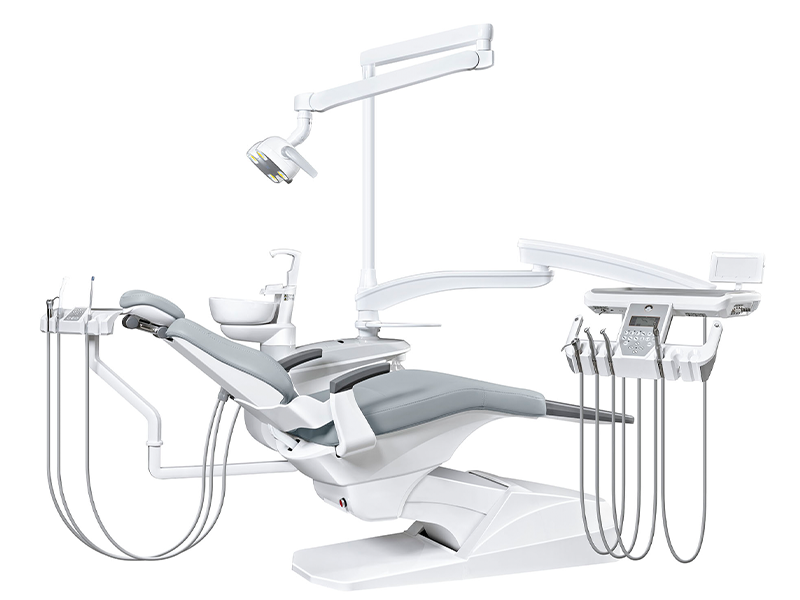The US dental market presents a significant opportunity for international suppliers of dental chairs. It's a market characterized by its size, growth potential, and the demand for high-quality equipment. However, breaking into this market requires a thorough understanding of the unique regulatory framework governing the sale of medical devices, including dental chairs. This comprehensive guide provides international suppliers with the essential information they need to successfully navigate US dental chair regulations and establish their presence in this lucrative market.
Understanding the Regulatory Framework
A regulatory framework is a comprehensive set of rules and guidelines established by governmental bodies to ensure compliance across various industries. These frameworks are essential for maintaining order and protecting public interests, as they set clear standards that organizations must adhere to. For example, in the financial sector, the Securities and Exchange Commission (SEC) enforces regulations to prevent fraud and protect investors. By conducting thorough impact assessments, regulatory frameworks help authorities make informed decisions that positively influence the socio-economic landscape. For more information on regulatory frameworks, you can visit the SEC's official website.
Importance of Regulatory Frameworks
The significance of regulatory frameworks cannot be overstated. They serve multiple purposes, including:
- Ensuring Compliance: Organizations must follow established regulations to avoid penalties and maintain operational integrity.
- Protecting Rights: Regulatory frameworks safeguard the rights of consumers and businesses, promoting fair competition.
- Enhancing Public Safety: By implementing safety standards, these frameworks help protect individuals from harmful practices.
For instance, the Food and Drug Administration (FDA) regulates medical devices to ensure they are safe for public use. This regulatory oversight is crucial for maintaining trust in healthcare systems. To learn more about the FDA's role, refer to their official site.
Components of a Regulatory Framework
A robust regulatory framework consists of several key components:
- Registration Requirements: Organizations must register with relevant authorities to operate legally within their industry.
- Compliance Monitoring: Regular audits ensure that entities adhere to established guidelines.
- Regulatory Notices: These provide updates on changes in regulations, ensuring organizations remain informed.
In sectors like healthcare, compliance involves meeting licensing requirements and adhering to patient privacy laws. For example, healthcare providers must register with state medical boards to guarantee compliance with professional standards.
Case Study: The Better Regulation Framework
The Better Regulation Framework aims to streamline regulatory processes while ensuring policies are effective and efficient. This framework offers guidance notes that assist organizations in navigating complex regulations without incurring penalties. For instance, businesses in the financial sector can consult resources on anti-money laundering procedures to ensure compliance with legal obligations. These guidance documents enhance understanding of compliance expectations and foster accountability across industries.
Key Regulatory Requirements
Establishment Registration and Device Listing
The FDA mandates that all establishments involved in the production and distribution of medical devices, including dental chairs, must register with the agency. This requirement extends to international manufacturers intending to market their products in the U.S. The registration process involves providing the FDA with comprehensive information about the establishment, its location, and the types of devices it handles.
Device listing is another critical aspect of the FDA's regulatory framework. Every dental chair model intended for sale in the U.S. must be listed with the FDA. The device listing process requires submitting detailed information about the chair, including its intended use, technical specifications, and labeling.
Step-by-Step Registration Process
-
Create an FDA Account: Begin by setting up an account in the FDA's electronic registration and listing system (FURLS).
-
Complete the Registration Form: Suppliers must provide detailed information about their establishment, including:
- Official establishment name and address
- Contact information
- Type of establishment (manufacturer, importer, etc.)
- A list of devices handled
-
Submit and Pay Fees: After completing the form, submit it electronically through FURLS along with applicable registration fees. The FDA reviews the submission and assigns a registration number upon approval.
-
Annual Renewal: Establishments must renew their registrations annually to maintain compliance. The annual establishment registration fee for fiscal year 2025 is $9,280.
Understanding Facility Standards
The Quality System Regulation (QSR) requires dental chair manufacturers to establish and maintain a quality system that complies with 21 CFR Part 820. This ensures that medical devices are consistently produced according to quality standards that meet FDA requirements. Facility inspections may be conducted by the FDA to ensure compliance with these regulations.
Premarket Notification (510(k))
Before introducing a dental chair to the U.S. market, international suppliers must obtain clearance from the FDA through the Premarket Notification (510(k)) process. This pathway is applicable for Class I and Class II medical devices, which include most dental chairs. The fundamental premise of the 510(k) process is demonstrating substantial equivalence to a legally marketed device known as a predicate device.
Substantial Equivalence Explained
Substantial equivalence means that while a new dental chair may not be identical to a predicate device, it serves the same intended use and any technological differences do not raise new safety or effectiveness concerns. For example, if a supplier introduces a dental chair with a new upholstery material, they must provide evidence that this material is as safe and durable as those used in existing predicate devices.
Preparing a 510(k) Submission
A 510(k) submission must include:
-
Device Description: A detailed description of the dental chair, including components and intended use.
-
Substantial Equivalence Comparison: A thorough comparison of the new dental chair to a chosen predicate device.
-
Technical Data: Engineering drawings, specifications, and performance testing data demonstrating compliance with safety standards.
-
Labeling: Proposed labeling for the dental chair, including instructions for use and precautions.
-
Biocompatibility Data: If applicable, data showing that materials contacting patients are biocompatible.
-
Sterilization Validation: Information on sterilization methods used for the chair.
The FDA reviews these submissions; if it determines that the new dental chair is substantially equivalent to a predicate device and meets all regulatory requirements, it issues a 510(k) clearance letter authorizing marketing in the U.S..
Quality System Regulation (QSR)
The QSR outlines requirements for designing, manufacturing, packaging, labeling, storing, and distributing medical devices. Key principles include:
-
Management Responsibility: Ensuring that management establishes and maintains an effective quality system.
-
Design Controls: Procedures to control device design ensuring it meets user needs.
-
Document Controls: Systems for managing documents related to design specifications and production procedures.
Implementing QSR involves developing a quality manual outlining policies and procedures, training employees on their responsibilities within this system, conducting internal audits regularly, and maintaining comprehensive records demonstrating compliance.
Labeling Requirements
Dental chairs must comply with FDA labeling requirements per 21 CFR Part 8010. Essential labeling elements include:
- Product Name
- Manufacturer Information
- Intended Use
- Warnings and Precautions
- Instructions for Use
- Unique Device Identification (UDI)
Medical Device Reporting (MDR)
MDR is essential for post-market surveillance of medical devices like dental chairs. International suppliers must report certain events to the FDA even if they have appointed a U.S. agent for regulatory matters. Reportable events include:
-
Death or Serious Injury: Events where malfunction is suspected of causing or contributing to patient death or serious injury.
-
Malfunction: Any malfunction that could lead to serious outcomes if it recurs.
Timely reporting is crucial; reports must be submitted within specified timeframes depending on event severity.
Additional Considerations for Testing and Certification
Ensuring Compliance with US Safety Standards
To guarantee that dental chairs meet US safety and performance standards, they must undergo rigorous testing and, in many cases, obtain certification from accredited organizations. The ANSI/ADA Standard 116 outlines essential safety requirements for dental equipment, including chairs. This standard specifies criteria for safety, performance, and durability, ensuring that dental chairs are reliable for clinical use. Furthermore, the ISO (International Organization for Standardization) publishes various standards applicable to dental chairs, covering aspects such as electrical safety, biocompatibility, and risk management. For detailed information on these standards, visit the ANSI website or the ISO website.
Benefits of Third-Party Certification
While third-party certification from organizations like UL (Underwriters Laboratories) or TÜV (Technischer Überwachungsverein) is not always mandatory, it offers significant advantages for international dental chair suppliers:
-
Demonstration of Compliance: Certification provides independent verification that the chair meets recognized safety and performance standards.
-
Enhanced Credibility: Certification boosts a supplier's reputation in the US market, instilling confidence among potential customers.
-
Streamlined Market Access: Certification may expedite the regulatory review process, facilitating faster entry into the US market. For more insights on TÜV certification benefits, check out this TÜV article.
Import Requirements for Dental Chairs
Importing dental chairs into the US requires adherence to specific documentation and procedural requirements. International suppliers must familiarize themselves with these requirements to ensure smooth customs clearance. The following checklist outlines necessary documentation:
-
Commercial Invoice: A detailed invoice listing the goods being imported, their value, and terms of sale.
-
Packing List: A document itemizing the contents of each package.
-
Bill of Lading or Air Waybill: A contract detailing transportation terms between the shipper and carrier.
-
FDA Import Entry Form: This form declares compliance with FDA regulations and is typically filed electronically.
-
510(k) Clearance Letter: If applicable, a copy of the FDA 510(k) clearance letter authorizing the import of specific dental chair models.
For further guidance on import regulations, refer to the FDA's official page.
Working with Customs Brokers
Navigating US customs regulations can be complex. Engaging a licensed customs broker can streamline the import process significantly. Customs brokers are experts in customs laws and can assist international suppliers with:
-
Classification and Valuation: Determining correct tariff classification and customs value for imported dental chairs.
-
Documentation Preparation and Filing: Ensuring all necessary import documents are accurately prepared and submitted to US Customs and Border Protection (CBP).
-
Customs Clearance: Facilitating timely clearance of goods through customs.
State Regulations
In addition to federal regulations, international suppliers must be aware of state-level requirements that may apply to the sale and distribution of dental chairs. Each state has its own laws governing medical devices that may include:
-
Licensing Requirements: Some states may require manufacturers or distributors to obtain specific licenses.
-
Registration Requirements: States may have separate registration processes for medical devices beyond federal registration.
-
Reporting Obligations: Certain states impose reporting requirements for adverse events or device malfunctions.
International suppliers should consult with each state's regulatory agency to determine specific requirements applicable to their products. For more information on state regulations, visit resources like the ADA Standards Committee.
Strategies for Market Entry
Partner with a US-Based Distributor
One of the most effective strategies for international dental chair suppliers entering the US market is to partner with a reputable US-based distributor. Distributors possess established networks and relationships with dental practices, along with expertise in navigating the complexities of the US market.
Finding the Right Distributor
-
Industry Experience: Look for distributors with a proven track record in the dental equipment sector. This ensures they understand market dynamics and customer needs.
-
Sales and Marketing Expertise: Ensure that the distributor has a robust sales force and marketing capabilities to effectively promote your dental chairs to US dentists.
-
Service and Support Network: Choose a distributor with a strong service and support network capable of handling installation, maintenance, and repairs.
-
Financial Stability: Assess the distributor's financial health to ensure they have the resources necessary to effectively represent your products.
Distribution Agreements
When partnering with a distributor, it is crucial to establish a well-defined distribution agreement that outlines the terms of your relationship. Key elements include:
-
Territory: Define the geographic area the distributor will cover.
-
Exclusivity: Clarify whether the distributor has exclusive rights to sell your products in their territory.
-
Pricing Structure: Establish clear pricing guidelines for both the distributor and end-users.
-
Marketing Support: Specify the level of marketing and sales support the distributor will provide.
-
Service Responsibilities: Clearly outline responsibilities regarding service and warranty claims.
Engage with Regulatory Consultants
Navigating the US regulatory landscape for medical devices is complex and constantly evolving. Engaging experienced regulatory consultants can provide invaluable guidance throughout your market entry process.
Benefits of Regulatory Expertise
-
Compliance Assurance: Consultants help ensure that your dental chairs meet all applicable FDA regulations, including 510(k) requirements, Quality System Regulations (QSR), and labeling regulations.
-
Submission Strategy Development: Consultants can devise strategic plans for your FDA submissions, optimizing the review process to minimize delays.
-
Communication Facilitation: They act as liaisons between your company and the FDA, addressing any questions or concerns that arise during the approval process.
-
Ongoing Support: Consultants provide continued assistance with post-market surveillance, Medical Device Reporting (MDR), and updates on regulatory changes.
Finding a Qualified Consultant
When seeking a regulatory consultant, consider their:
-
Industry Experience: Look for consultants who specialize in dental equipment.
-
FDA Knowledge: Ensure they have a deep understanding of FDA regulations and procedures.
-
Reputation: Seek recommendations from industry peers or professional organizations to identify reputable consultants. For more information, you can refer to MCRA's services here.
Attend Industry Events
Participating in dental industry events is an excellent way for international suppliers to gain market insights, network with potential distributors, and showcase their products to US dentists.
Key Dental Trade Shows in the US
-
Greater New York Dental Meeting: One of the largest dental trade shows globally, held annually in New York City.
-
Chicago Dental Society Midwinter Meeting: A major dental event in the Midwest, held annually in Chicago.
-
California Dental Association Presents The CDA Meeting: A prominent dental show on the West Coast, held annually at various locations throughout California.
These events not only provide opportunities for networking but also allow suppliers to stay updated on industry trends and customer preferences. For further details on upcoming events, visit the American Dental Association's website here.
Marketing and Sales
Develop Targeted Marketing Materials
To effectively penetrate the US dental market, international suppliers must first understand the diverse demographics of US dentists. Key factors to consider include:
-
Demographics: Analyze age, gender, practice size, and specialization to tailor marketing efforts.
-
Trends: Stay updated on emerging trends such as digital dentistry and minimally invasive techniques, which are increasingly shaping patient preferences.
-
Preferences: Recognize US dentists' priorities regarding dental equipment, focusing on technology, infection control, ergonomics, and aesthetics.
Crafting Effective Marketing Messages
When crafting marketing messages for dental chairs, it's crucial to highlight their key benefits. Emphasize aspects like:
-
Patient Comfort: Illustrate how your chairs enhance patient experience through ergonomic design.
-
Workflow Efficiency: Showcase features that streamline operations for dental professionals.
-
Infection Control: Stress the importance of robust infection control measures integrated into your products.
Utilizing compelling language that resonates with US dental professionals is essential. Incorporate testimonials from satisfied customers to build trust and credibility.
Showcase Quality and Compliance
Highlighting the quality and compliance of your dental chairs is vital for gaining market trust. Key areas to focus on include:
-
Infection Control Features: Promote seamless upholstery and easily cleanable surfaces that meet stringent hygiene standards.
-
Technological Integration: If applicable, showcase advanced features like touch-screen controls or multimedia systems that enhance usability.
-
Regulatory Compliance: Clearly state FDA 510(k) clearance for your products, providing the clearance number for verification. Mention QSR compliance of manufacturing facilities and any relevant third-party certifications.
Offer Competitive Pricing and Financing Options
To attract US dentists, consider implementing strategic pricing structures:
-
Direct Sales: Establish competitive pricing that aligns with market expectations while ensuring profitability.
-
Distributor Pricing: Negotiate pricing with distributors that allows for competitive retail offerings.
-
Leasing Options: Explore leasing programs to make acquiring dental chairs more accessible for practices.
Additionally, partnerships with financial institutions can help offer financing solutions tailored to dentists' needs.
Build Strong Customer Relationships
Strong customer relationships are foundational to sustaining a successful presence in the US market. Focus on:
-
Customer Service: Providing prompt and efficient support is critical. Address inquiries quickly and comprehensively.
-
Technical Support: Offer thorough technical assistance for installation and maintenance of your products.
-
Training Programs: Educate dental practice staff on the proper use and care of your dental chairs to ensure optimal performance.
Regular follow-ups with customers can help ensure satisfaction while addressing any concerns promptly. Consider offering value-added services such as extended warranties or preventive maintenance programs to foster loyalty.
By implementing these strategies, international dental chair suppliers can establish a strong presence in the US market while building lasting relationships with dental practices.
Conclusion
Entering the US dental chair market is a challenging but rewarding endeavor for international suppliers. By understanding and diligently adhering to FDA regulations, proactively addressing testing and certification needs, strategically planning market entry, and developing effective marketing and sales strategies, suppliers can successfully navigate the complexities of this market and capitalize on its vast potential. Remember, building trust and credibility with US dentists through compliance, quality, and exceptional customer service is paramount to achieving long-term success in this dynamic and lucrative market.

